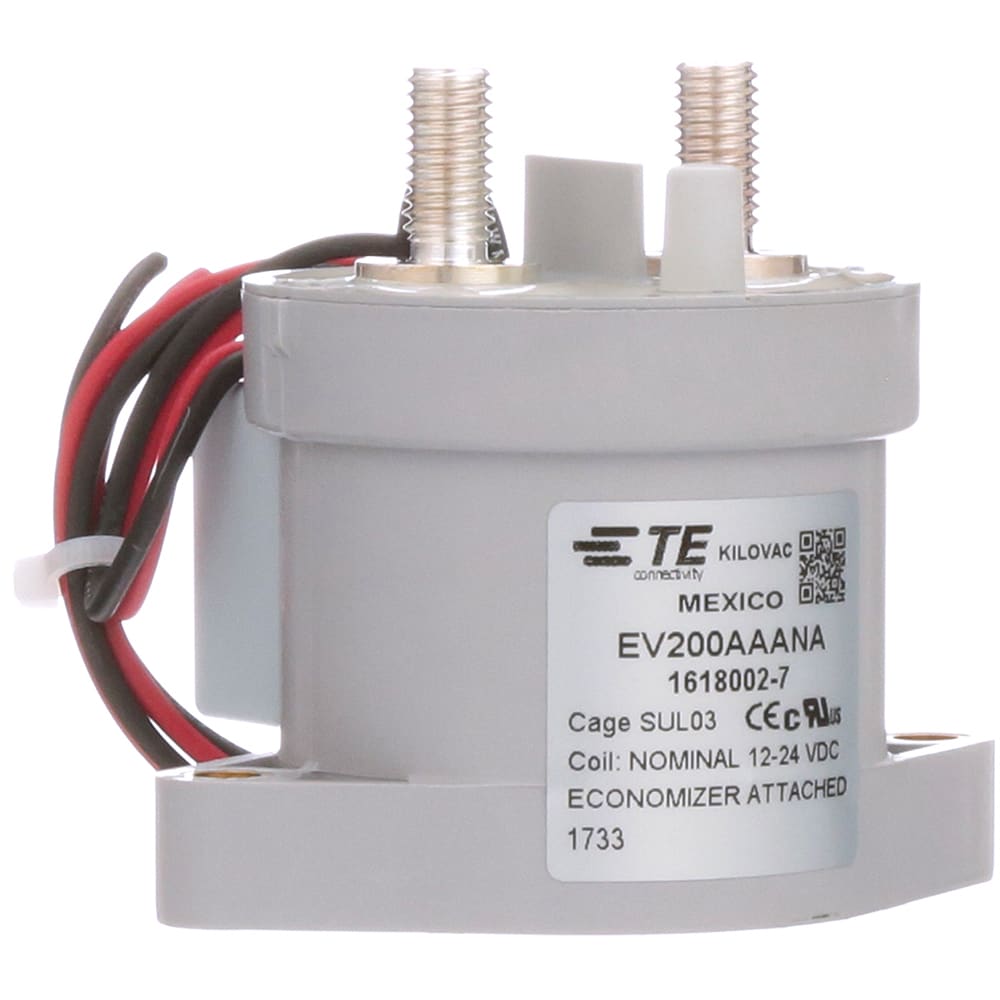robbob2112
Doing more research, mosty harmless
My plan is to install them as emergency disconnects and never use them unless current is at zero or there is an emergency. At $15 each they are cheaper than some fuses.
My plan is to install them as emergency disconnects and never use them unless current is at zero or there is an emergency. At $15 each they are cheaper than some fuses.
Batteryhookup has them (used, pulled from EV packs) for $15.I can't seem to get myself to pay $200 for the motorized battery switch. I am getting close to pulling the trigger on this one

 batteryhookup.com
batteryhookup.com
I’m actually surprised about how low the hold down current is. Only about 1.5 watts. This is great in terms of battery usage but makes me wonder how strong the return spring is. Too weak and even the slightest of arc could potentially weld the contacts in place without enough force to pull it apart. Suggest that you reduce current as much as possible before switching. If the device to power the coil is a transistor, remember to protect it the transistor from the coil’s “back EMF” .Batteryhookup has them (used, pulled from EV packs) for $15.

TE Connectivity EV200AAANA 500a 0-900vdc Tyco 12/24v
These were recovered from EV battery modules. These are VERY EXPENSIVE online. If you have any project that needs a high current relay this is your chance to save some money. Make a cheap 30a BMS into a 500a BMS. This will work for batteries in the 9-36v range so perfect for Lifepo4 and Lithium...batteryhookup.com

This specific model has an "economizer", which draws less power after initial contact is made. I don't think it affects the disconnect strength. Also, they claim it protects from back EMF:I’m actually surprised about how low the hold down current is. Only about 1.5 watts. This is great in terms of battery usage but makes me wonder how strong the return spring is. Too weak and even the slightest of arc could potentially weld the contacts in place without enough force to pull it apart. Suggest that you reduce current as much as possible before switching. If the device to power the coil is a transistor, remember to protect it the transistor from the coil’s “back EMF” .

Still like my solenoid idea on the breaker.
Just an itch I'll have to scratch. I wish I could find some old videos of a really cool antenna disconnector we made. Disconnected multiple coaxes via linear actuator.Yeah, I always think of that too when I turn one off ... so little force needed to make it click off.
They're rated for 500A+ between 12-900V DC ... and 2,000A interrupt at 320V DC. The contacts are hermetically sealed, so far less likely to oxidise and arc etc. I'm certainly more comfortable in flicking this off in an emergency if I had to, than the DC cct breaker.
I ordered the contactor yesterday. Will enjoy a little torture testing
AFAIK, the contactors in EVs do not normally switch under high load. They switch on when you power the car, and switch off when your parked and turn off the car. The current during these actions isn't supposed to be significant (especially because it's high voltage).
Of course they need to support the higher continous currents when the EV is being driven. But not so when switching on/off.
I think the Tesla packs have replaceable pyro fuses for emergency disconnect purposes.There are DC breakers rated 50,000 AIC. Why would you prefer a relay rated 2000 AIC as emergency disconnect?
I would expect these to just sit and burn under fault currents.
How high a DC current, at pack voltage, can you go?
Exactly.
I didn't know they had it in the vehicles. I figured it was a spring loaded fuse, once it blows it moves out of the way asap. Learned something new.I think the Tesla packs have replaceable pyro fuses for emergency disconnect purposes.

Just get the midnite solar breakers that can be remote tripped by a signal.
There are DC breakers rated 50,000 AIC. Why would you prefer a relay rated 2000 AIC as emergency disconnect?
I would expect these to just sit and burn under fault currents.
All kinds of cool ideas here. have to make a bracket for it as it is a panel mount.Just get the midnite solar breakers that can be remote tripped by a signal.

or put them in a Midnite 2000A battery combiner box....which can hold 12 of them. They max out at 175A and 250A.All kinds of cool ideas here. have to make a bracket for it as it is a panel mount.

MidNite Solar MNEDC250RT Remote Trip Circuit Breaker 250A
NOTICE: The MidNite Solar MNEDC250RT remote trip circuit breaker is not UL or ETL listed. However, if you don't need the remote trip functionality, the standard (non-RT) version of this circuit breaker is listed: MNEDC250.www.solar-electric.com
Can't beat that response time...I didn't know they had it in the vehicles. I figured it was a spring loaded fuse, once it blows it moves out of the way asap. Learned something new.

Pyro Safety Switches
www.autoliv.com



